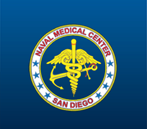Assessment of Severe Extremity Wound Bioburden at the Time of Definitive Wound Closure or Coverage
| Status: | Active, not recruiting |
|---|---|
| Conditions: | Orthopedic |
| Therapuetic Areas: | Orthopedics / Podiatry |
| Healthy: | No |
| Age Range: | 18 - 64 |
| Updated: | 12/1/2018 |
| Start Date: | September 2011 |
| End Date: | March 2019 |
Assessment of Severe Extremity Wound Bioburden at the Time of Definitive Wound Closure or Coverage: Correlation With Subsequent Post-Closure Deep Wound Infection: Bioburden Study
The purpose of this study is to characterize the bacteria in the wound "bioburden" at the
time of definitive wound coverage/closure of severe tibia fractures in both the military and
civilian populations.
time of definitive wound coverage/closure of severe tibia fractures in both the military and
civilian populations.
Infection remains the most common and significant complication following high energy
fractures. The strategies used in the prevention of deep infection following severe open
fracture wounds have remained constant for the past 20 years.
This project is designed to analyze the microbiology profiles of wounds from severe tibia
fractures at closure by comparing two methods: routine microbiology techniques and PCR
methods using the Ibis T5000 Biosensor System. The results from both identification methods
will be compared to the pathogens associated with deep surgical site infections that occur
post closure of the wound. Currently it is unknown which of these methods will yield
information that can lower complication rates and better function of the leg. Our goal is to
perform a multi-center, prospective cohort study of wound bacterial bioburden and associated
antibiotic care in severe open lower extremity fractures.
Primary Aim: In a subset of 60 patients, compare the bioburden, as detected by Ibis
technology, from each of three sampling techniques (deep tissue; soft tissue composite;
composite of tissue from the length and depth of the wound). Samples obtained using the most
effective technique identified in this step will be processed using Ibis in subsequent tissue
analysis. Effectiveness is defined as the ability to identify key wound infection-causing
pathogens.
Primary Hypothesis: The composite sampling approach will be the most effective technique.
Secondary Aim: Characterize the wound bioburden at the time of definitive wound closure or
coverage using the Ibis T5000 Biosensor System PCR technology as compared to standard
microbiology techniques.
Hypothesis 2: The Ibis technology will detect more species of pathogens than standard
microbiology techniques. The percent of patients for whom Ibis will detect all species
identified by standard microbiology will be greater than 95%.
Specific Aim 3: Characterize the wound bioburden in the patients who develop deep infection
within one year of wound closure, and determine the association between infecting pathogens
with initial wound closure bioburden as measured jointly by Ibis and standard microbiology
techniques.
Specific Aim 4: Document the variability in antibiotic selection and duration, and examine
the impact of this selection on subsequent deep infection.
Hypothesis 4a: Among patients treated with antibiotic regimens that are appropriate for the
pathogens identified by standard microbiology, there will be a lower probability of deep
infection than among those patients who received inappropriate antibiotic regimens.
Hypothesis 4b: Among patients treated with antibiotic regimens that are appropriate for the
pathogens identified by Ibis, there will be a lower probability of deep infection than among
those patients who received inappropriate antibiotic regimens.
fractures. The strategies used in the prevention of deep infection following severe open
fracture wounds have remained constant for the past 20 years.
This project is designed to analyze the microbiology profiles of wounds from severe tibia
fractures at closure by comparing two methods: routine microbiology techniques and PCR
methods using the Ibis T5000 Biosensor System. The results from both identification methods
will be compared to the pathogens associated with deep surgical site infections that occur
post closure of the wound. Currently it is unknown which of these methods will yield
information that can lower complication rates and better function of the leg. Our goal is to
perform a multi-center, prospective cohort study of wound bacterial bioburden and associated
antibiotic care in severe open lower extremity fractures.
Primary Aim: In a subset of 60 patients, compare the bioburden, as detected by Ibis
technology, from each of three sampling techniques (deep tissue; soft tissue composite;
composite of tissue from the length and depth of the wound). Samples obtained using the most
effective technique identified in this step will be processed using Ibis in subsequent tissue
analysis. Effectiveness is defined as the ability to identify key wound infection-causing
pathogens.
Primary Hypothesis: The composite sampling approach will be the most effective technique.
Secondary Aim: Characterize the wound bioburden at the time of definitive wound closure or
coverage using the Ibis T5000 Biosensor System PCR technology as compared to standard
microbiology techniques.
Hypothesis 2: The Ibis technology will detect more species of pathogens than standard
microbiology techniques. The percent of patients for whom Ibis will detect all species
identified by standard microbiology will be greater than 95%.
Specific Aim 3: Characterize the wound bioburden in the patients who develop deep infection
within one year of wound closure, and determine the association between infecting pathogens
with initial wound closure bioburden as measured jointly by Ibis and standard microbiology
techniques.
Specific Aim 4: Document the variability in antibiotic selection and duration, and examine
the impact of this selection on subsequent deep infection.
Hypothesis 4a: Among patients treated with antibiotic regimens that are appropriate for the
pathogens identified by standard microbiology, there will be a lower probability of deep
infection than among those patients who received inappropriate antibiotic regimens.
Hypothesis 4b: Among patients treated with antibiotic regimens that are appropriate for the
pathogens identified by Ibis, there will be a lower probability of deep infection than among
those patients who received inappropriate antibiotic regimens.
Inclusion Criteria:
1. All open Grade III tibia fractures (plateau, shaft, pilon) requiring a second
procedure following fixation, or traumatic transtibial amputations requiring delayed
primary closure, skin grafting and/ or flap coverage.
2. Ages 18 - 64 years inclusive
3. Patients may have risk factors for infection including diabetes, immunosuppression
from steroids or other medications, HIV, or other infections.
4. Patients may have a traumatic brain injury.
5. Patients may have other fractures including spine, upper extremity fractures,
contralateral lower extremity injuries, ipsilateral pelvis, hip, femur or foot
injuries.
6. Patients may be treated initially at an outside institution prior to transfer to the
study institution, as long as the definitive fixation was not performed prior to
entrance into the study.
7. Patients with bilateral injuries that meet inclusion criteria may be included, but
only the limb rated as "more severe" by the treating surgeon will be enrolled in the
study.
8. Patients may have co-existing non-tibial infection, with or without antibiotic
treatment.
9. Patients may have an existing infection of the surgical wound under treatment at the
time of wound closure.
10. Patients may be definitively fixed using any method (nail, plate, ex fix)
11. Patients may have a fasciotomy
Exclusion Criteria:
1. Patient speaks neither English nor Spanish
2. Patient is a prisoner
3. Patient has been diagnosed with a severe psychiatric condition
4. Patient is intellectually challenged without adequate family support
5. Patient lives outside the hospital's catchment area
6. Patients with planned follow-up at another medical center
We found this trial at
40
sites
Harborview Medical Center Harborview Medical Center is the only designated Level 1 adult and pediatric...
Click here to add this to my saved trials
Click here to add this to my saved trials
University of Mississippi Medical Center The University of Mississippi Medical Center, located in Jackson, is...
Click here to add this to my saved trials
1211 Medical Center Dr
Nashville, Tennessee 37232
Nashville, Tennessee 37232
(615) 322-5000

Vanderbilt Univ Med Ctr Vanderbilt University Medical Center (VUMC) is a comprehensive healthcare facility dedicated...
Click here to add this to my saved trials
Naval Medical Center - Portsmouth Naval Medical Center Portsmouth, Virginia has proudly served the military...
Click here to add this to my saved trials
University of Rochester The University of Rochester is one of the country's top-tier research universities....
Click here to add this to my saved trials
University of Utah Research is a major component in the life of the U benefiting...
Click here to add this to my saved trials
Naval Medical Center - San Diego We are the largest and most comprehensive military healthcare...
Click here to add this to my saved trials
Click here to add this to my saved trials
Click here to add this to my saved trials
Click here to add this to my saved trials
Click here to add this to my saved trials
8901 Rockville Pike
Bethesda, Maryland 20889
Bethesda, Maryland 20889
(301) 295-4000

Walter Reed National Military Medical Center The Walter Reed National Military Medical Center is one...
Click here to add this to my saved trials
Click here to add this to my saved trials
University of Virginia The University of Virginia is distinctive among institutions of higher education. Founded...
Click here to add this to my saved trials
MetroHealth Med Ctr The MetroHealth System is one of the largest, most comprehensive health care...
Click here to add this to my saved trials
Click here to add this to my saved trials
Grant Medical Center Founded in 1900 in Columbus' downtown, Grant has grown into one of...
Click here to add this to my saved trials
Click here to add this to my saved trials
Click here to add this to my saved trials
Click here to add this to my saved trials
Click here to add this to my saved trials
Click here to add this to my saved trials
Houston, Texas 77030
Click here to add this to my saved trials
Click here to add this to my saved trials
University of Iowa Hospitals and Clinics University of Iowa Hospitals and Clinics—recognized as one of...
Click here to add this to my saved trials
University of Kansas Medical Center The University of Kansas Medical Center serves Kansas through excellence...
Click here to add this to my saved trials
Click here to add this to my saved trials
701 Park Ave
Minneapolis, Minnesota 55415
Minneapolis, Minnesota 55415
(612) 873-3000

Hennepin County Medical Center - Minneapolis Hennepin Healthcare System, Inc. operates Hennepin County Medical Center...
Click here to add this to my saved trials
Click here to add this to my saved trials
University of Oklahoma The OU Health Sciences Center is composed of seven health-related colleges located...
Click here to add this to my saved trials
Temple University Hospital On January 18, 1892 a three-story house at 3403 North Broad Street...
Click here to add this to my saved trials
Click here to add this to my saved trials
Click here to add this to my saved trials
Click here to add this to my saved trials
Click here to add this to my saved trials
Regions Hospital Established in 1872, Regions Hospital is a private, not-for-profit organization. The hospital provides...
Click here to add this to my saved trials
Click here to add this to my saved trials
Scott & White Memorial Hospital When Arthur C. Scott, MD, and Raleigh R. White Jr.,...
Click here to add this to my saved trials
1 Medical Center Blvd
Winston-Salem, North Carolina 27103
Winston-Salem, North Carolina 27103
(336) 716-2011

Wake Forest University Baptist Medical Center Welcome to Wake Forest Baptist Medical Center, a fully...
Click here to add this to my saved trials















